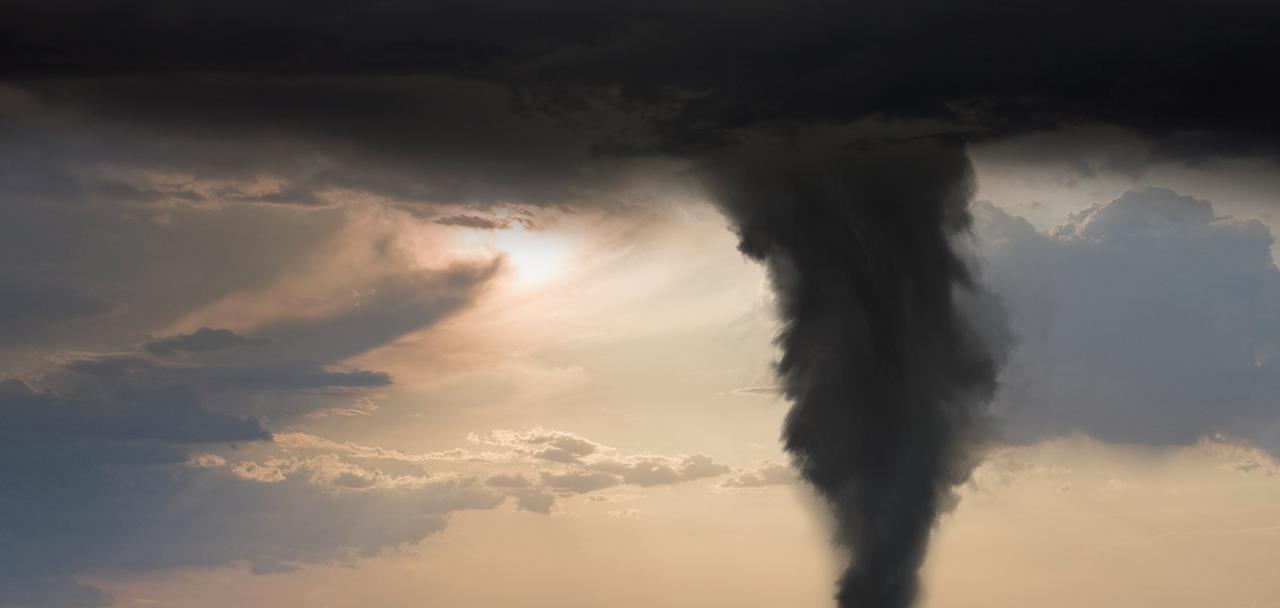AllianceBernstein: When Disaster Strikes: Gauging the Investment Risk of Natural Hazards
NORTHAMPTON, MA / ACCESSWIRE / December 18, 2023 / AllianceBernstein
Patrick O'Connell, CFA| Director-Fixed Income Responsible Investing Research
John Huang, CFA| Director-Fixed Income Responsible Investing, Data and Technology
Larry Bellinger, CFA| Director-Municipal Credit Research
Sam Wilamowsky, CFA | Research Analyst-Securitized Assets
Investors need to understand the potential physical damage from natural hazards before they can assess their financial implications.
From hurricanes to earthquakes to droughts, natural disasters are becoming more numerous, extreme and costly. To assess the potential financial damage, investors must better understand physical risks at the local level. That's the goal of a collaboration between AB and the Columbia Climate School.
Understanding Physical Risks from Natural Hazards
In 2016, the Columbia Climate School's National Center for Disaster Preparedness created a Natural Hazards Index, a wide-ranging assessment of natural hazard exposures across US states and counties. The intent was to help US households, communities, and public health and emergency management practitioners prepare against natural disasters.
AB subsequently worked with Columbia on an upgraded 2.0 version, released in early 2023, that can generate a detailed interactive map showing natural hazard exposures across the US (Display). It can drill down to any of the 73,057 underlying census tracts that comprise the 3,143 US counties.
The Natural Hazards Index captures the frequency and magnitude of 14 different natural hazards, including coastal flood, damaging wind, drought, earthquake, extreme heat, floods, hail, hurricanes, landslides, tornado, tsunami, volcano, wildfire and winter storms.
It draws on a vast range of data from four different categories: historical data, based on prior events; probabilistic or predictive data, providing some percentage likelihood of an outcome; deterministic data, pointing to an expected outcome given a set of conditions; and a model data set, which uses multiple explanatory variables to approximate selected outcomes. These data are continuously updated.
The result is a non-ranked, summative index with individual hazard scores from one (very low) to five (very high) and, where multiple hazards exist, summative hazard scores as high as 42. The index has made a significant contribution to understanding evolving physical risks to people and property and has greatly assisted the work of first responders.
But the Natural Hazard Index is not a risk index; it isn't designed to tell us damage or loss estimates or potential population impact. It does, however, provide a strong foundation for this next step.
Three Factors Can Turn a Hazard into a Disaster
For each hazard, investors must consider three key factors that can mitigate or multiply the damage, turning a hazard into a disaster.
The first is exposure: how close is the locale to the hazard? Is it in a floodplain? Surrounded by forest that is flammable from longer and drier summers? In an area prone to hurricanes? Second comes vulnerability. A hazard may be nearby, but precautions can mitigate its effects. For example, using wind-resistant materials when building can curb storm damage. Last is capacity-the ability to cope with the hazard. When disaster strikes, are residents able to evacuate? Do they have access to a car and a place to go?
Ultimately, natural hazard risk is determined by the intersection of the natural hazard and these risk factors-exposure, vulnerability and capacity.
Understanding the Financial Implications of Physical Hazards
To develop a proxy for these three risk factors, we reviewed 30 years of financial cost data from sources such as the National Oceanic and Atmospheric Administration, the US Geological Survey, the University of Oregon, and other institutions that have compiled data on the costs of cleaning up after and mitigating major perils.
With this vast amount of data as a starting place, we created a quantitative risk tool-the Physical Hazard Investment Risk (PHIR) indicator-that scores US census tracts and counties' total hazard investment risk, ranked from zero (lowest) through 10 (highest) and visualized in a map (Display) that highlights areas with the most financially material risk exposure.
Putting the Physical Hazard Investment Risk Indicator to Work
Several hazards stand out as more costly than the rest: hurricanes, severe storms, droughts and floods. When a location is exposed to more than one of these and has high vulnerability and low capacity, the effect can be dramatic. The US Gulf Coast, for example, faces a cluster of the most devastating natural hazards-hurricanes, floods and coastal flooding (exacerbated by sea-level rise)-and has limited ability to mitigate them.
By contrast, the US Midwest has low PHIR scores, though there are many exceptions. Because the PHIR tool drills down to census tract level, it can identify pockets of risk that other analytics might miss.
PHIR scores are particularly relevant for investors in residential mortgage-backed securities and US municipal bonds. Homes, schools, hospitals, power plants and airports are all tied to specific locations, and so are exposed to the natural hazards in their locale. The tool can help identify securities where natural hazard risks are potentially mispriced by the market and should be accounted for in bond valuations.
In a world where climate is changing fast and natural hazards are becoming ever more important, both the Natural Hazards Index and the PHIR indicator that builds on it can be invaluable tools for investors, providing a deeper understanding of these material risks.
The views expressed herein do not constitute research, investment advice or trade recommendations and do not necessarily represent the views of all AB portfolio-management teams. Views are subject to revision over time.
About the Authors
Patrick O'Connell is a Senior Vice President and Director of Fixed Income Responsible Investing Research. In this role, he is part of the leadership team that develops responsible investment strategy across AB's Fixed Income business, particularly related to integrating environmental, social and governance considerations throughout the team's research and engagement. Previously, O'Connell served as a corporate credit research analyst, focusing on emerging-market corporates in Latin American and African countries. He joined the Emerging Markets research team in 2013 after working as a credit analyst covering US high-yield energy credits at AB. Prior to joining the firm in 2012, O'Connell was a desk analyst at UBS Investment Bank, where he helped to allocate capital on the trading desk. He holds a BS in accounting and finance (magna cum laude) from Villanova University and is a CFA charterholder. Location: New York
John Huang is a Vice President and Director of Fixed Income Responsible Investing, Data and Technology. In this role, he is part of the leadership team that develops responsible investment strategy across AB's Fixed Income business. Huang previously spent eight years as a research analyst for Commercial Real Estate Credit Research within the Securitized Assets Research team, covering commercial mortgage-backed securities in support of the firm's global fixed-income portfolios. Prior to that, he was an associate portfolio manager on the Fixed Income Multi-Sector team, serving US Core and Core Plus clients. Huang joined AB in 2005 as an attribution analyst and developed the firm's proprietary fixed-income attribution platform. Prior to that, he worked as a performance analyst at UBS. Huang holds a BS in finance and information technology and an MBA from the State University of New York, Binghamton. He also holds a Series 7 license and is a CFA charterholder. Location: New York
Larry Bellinger is a Senior Vice President and Director for the Municipal Credit Research Group, providing high-yield research on municipal credits, with a focus on senior living and hospitals. He initially joined AB in 2012 as a municipal credit research analyst, focusing on municipal credits in Northeastern states, as well as Florida, Ohio and Wisconsin. Bellinger returned to the firm in 2019. In between, he spent three years as a research analyst with Schroders, covering all regions and all municipal sectors for investment-grade and high-yield credits. Earlier in his career, Bellinger worked at Moody's Investors Service, where he primarily analyzed municipal credits in the Northeast. Prior to that, he was an analyst at insurance-rating agency AM Best Company and a D&O underwriter for financial institutions at insurance company Chubb. Bellinger holds a BS in business administration (international business) from Central Washington University, an MBA from Michigan State University and a JD from Rutgers Law School. He is a CFA charterholder. Location: New York
Sam Wilamowsky is a Research Analyst with the Securitized Assets Research team. He began his current role in 2017, focusing on US agency mortgage-backed securities. Prior to that, Wilamowsky was a member of the US Multi-Sector and Securitized Portfolio Management team, where he served as an associate portfolio manager since 2013. He joined the firm in 2007 as a quantitative analyst, specializing in portfolio risk and attribution modeling. Wilamowsky holds a BA in liberal arts from Excelsior College and an MS in financial engineering from New York University. He is a CFA charterholder. Location: New York
Learn more about AB's approach to responsibility here.

View additional multimedia and more ESG storytelling from AllianceBernstein on 3blmedia.com.
Contact Info:
Spokesperson: AllianceBernstein
Website: https://www.3blmedia.com/profiles/alliancebernstein
Email: info@3blmedia.com
SOURCE: AllianceBernstein
View the original press release on accesswire.com







